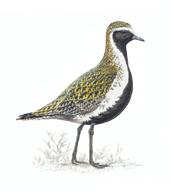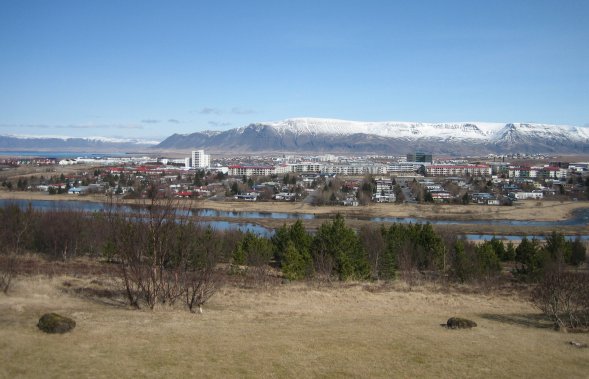The First Day of Summer is also the first day of the month of Harpa. The derivatíon of this name is not clear; it may have been a reference to harsh spring weather, but was traditionally interpreted as the name of a young girl. While the month of Þorri was a man and the month of Góa was a woman, Harpa was sometimes called their daughter. Since the month of Harpa was widely believed to be a reference to a girl's name, it is not surprising that the First Day of Summer became attached to young girls. On the first day of Harpa, also known as "yngismeyjardagur" or "Maiden's Day", young lads were supposed to welcome the "maiden," Harpa, and to be particularly courteous and attentive to young girls. They, the girls, gave their compliment on "yngismannadagur" (Lads' Day), the first day of the month of Einmánuður. While St. Valentine's Day (February 14) was not known to Icelandic lovers, Maiden's Day and Lads' Day performed much the same function.
 |
The various migratory birds have commonly been regarded as harbingers of summer in Iceland, e.g. the golden plover and the whimbrel. Although the golden plover might arrive before the last snow had fallen, the consensus was that summer had arrived in earnest when the whimbrel or snipe was seen.
It was commonly regarded as a good omen if summer and winter "froze together," i.e. if there was a frost on the night before the First Day of Summer. A dish of water was usually left out in a sheltered place, to show whether the temperature dropped below freezing.
A light-hearted tradition attached to the First Day of Summer was to tell one's fortune from the summer moon (i.e. the next moon after the Easter moon). After seeing the first new moon of the summer, one had to remain silent, and wait to be addressed. What was said could bode either good or ill. The most famous story of this kind is of a young, newly engaged girl, who saw the summer moon. When she sat down in a decrepit chair someone said to her. "Watch out, he's unsteady" (chair is a masculine noun in Icelandic). Her sweetheart jilted her that summer.


